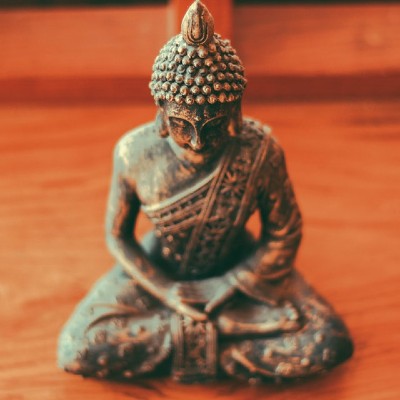I’m often moved by the well known story of Ananda asking the Buddha if having noble friends and companions was half of the holy life. The Buddha replied: “Do not say so, Ananda. Noble friends and companions are the whole of the holy life.” Meditative interpersonal inquiry is a practice that exemplifies this holy life.
When one thinks of meditation practice, what may typically come to mind is the image of a solitary meditator, sitting on a cushion, focusing intently on their individual inward experience in the present moment. Even if the meditator is in a retreat or class setting with other meditators the actual core practice of meditation is still usually silent, solitary, inward, without interaction with the other meditators.
Yet, we are social animals, and our very personalities and mental and emotional conditioning are formed in relationship with and even defined by our families and others from the very beginning. The therapy process is inherently relational as well, based on a deeply trusting relationship between patient and therapist. Why should meditation and the process of spiritual awakening be any different?
Having myself practiced the typical solitary style of meditation my entire adult life I too spent many years thinking this was it. Yet somehow, even early on, I knew I would not make much progress without some kind of support from a teacher or group of spiritual friends. I became very active in the early years of IMCW helping support Kalyana Mitta (Spiritual Friends) groups and similar support groups in other contexts. But it wasn’t until I finally discovered interpersonal meditative inquiry that I even realized the true power of this form of practice.
Interpersonal practice, in many ways, is exactly the same as solitary practice; it’s simply done with another person present who supports maintaining our mindfulness moment by moment and helping us constantly return to present moment awareness. Both solitary and interpersonal practice is about “RAIN”: Recognizing the flow in the here and now of our conditioned thoughts, feelings, and senses, Allowing the pleasantness or unpleasantness that accompanies that flow, Inquiring, exploring, and being curious about that flow, and Not identifying, spontaneously letting go of the hypnotic hold of that flow.
In solitary practice it is all too easy for our conditioned minds to distract us. We can be so identified with what our inner voice or emotions are telling us that it often can be nearly impossible to simply rest in awareness itself and allow thoughts to come and go without reacting to them. With another person present a powerful shared field of intention is created. I find this field of shared presence with my partner to be quite palpable and itself a powerful reminder to stay present moment to moment, even without any words said.
There are many variations on this basic practice of “holding space” for mindfulness and shared presence. Your partner may offer a simple repeating question, such as “What are you feeling in your body in this moment?” perhaps followed by “Can you be with this?” These repeating questions can be more specific regarding a particular area of inquiry (such as exploring aspects of one’s enneagram type), or they can be quite open-ended. As you become more skilled you can begin to simply sit in presence together with your partner using their intuition to occasionally ask very simply what is happening in the moment when they sense that your attention is wavering.
It can be helpful for the inquirer to give voice, in simple short descriptive phrases, to what they are experiencing in this present moment. As with solitary practice it is skillful to begin with, and stay grounded in, direct bodily sensation. Similar to the practice of “noting” in solitary practice, one might give voice to the sensations that are occurring as they are occurring, such as “I’m feeling a rumbling kind of energy in the bottom of my belly right now.” After a few more moments opening to this, if you notice another sensation, you can then give voice to that, such as “Now that rumbling feels more like a slight pulsing. Now I feel it resonating in my chest as well. It feels vulnerable there.”
By practicing with another person, and giving voice to our concrete experience, we create a powerful shared field of awareness. It’s like having more light in the room allowing us to see much more clearly and in a more sustained way. The inquiry and insight then becomes more sustainable and penetrating as well. Over time, through this shared practice, we create a deep ongoing process of waking up together.



